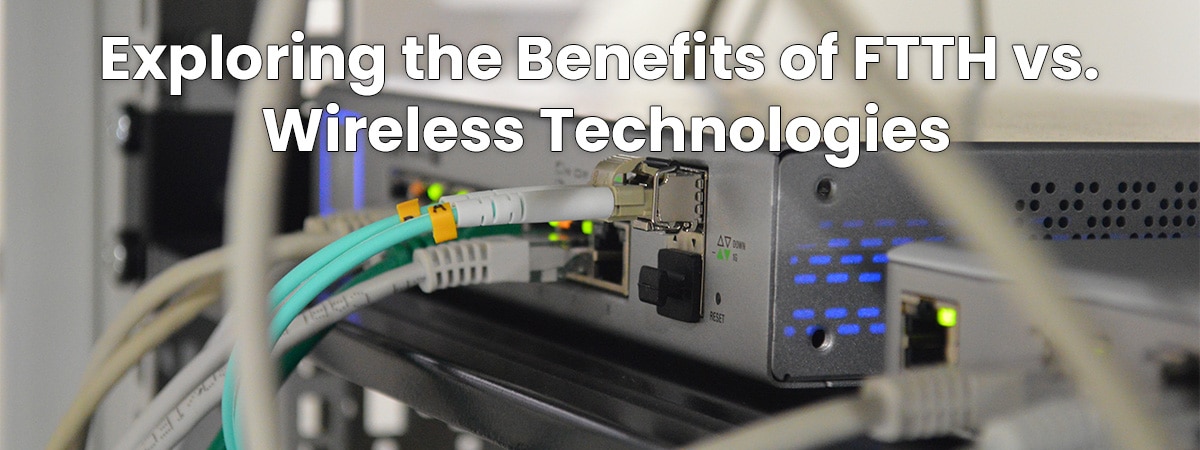Introduction
In today’s ever-evolving digital world, connectivity is essential for businesses and consumers alike. Whether it’s for streaming video, browsing the web, or playing online games, having a reliable and fast connection is a must-have. With the proliferation of wireless technologies, such as Wi-Fi and cellular networks, it can be easy to overlook the importance of fiber-to-the-home (FTTH) networks. While both offer high-speed internet access, there are some significant differences between FTTH and wireless technologies that make FTTH the better option for many applications. In this article, we will discuss the pros and cons of FTTH and wireless technologies, and consider why FTTH is the superior choice in many cases.
FTTH Overview
FTTH is a type of fiber-optic network that runs fiber-optic cables directly to a home or business. This type of connection is faster and more reliable than traditional copper wiring or wireless networks, as it is capable of transmitting data at much higher speeds and with less latency. FTTH also has the advantage of being future-proof, as it can be easily upgraded to accommodate higher speeds and other advances in technology.
Wireless Technology Overview
Wireless technologies, such as Wi-Fi and cellular networks, provide internet access without the need for physical cables. Wi-Fi is typically used in homes and businesses, while cellular networks are used to provide mobile internet access. Wi-Fi is generally less expensive and easier to install than FTTH, but it also has some drawbacks. Wi-Fi signals can be easily blocked by obstacles, such as walls or furniture, and the range is limited. Cellular networks are more reliable, but they can be expensive and slow.
Pros and Cons of FTTH
The primary advantage of FTTH is its speed and reliability. FTTH can provide speeds up to 100 Mbps, which is much faster than most wireless networks. The connection is also extremely reliable, as it is not prone to interference from other devices or obstacles. FTTH can also be easily upgraded to accommodate higher speeds, so it is a great choice for businesses or households that require a lot of bandwidth.
The major downside of FTTH is the cost. The installation and maintenance of FTTH can be expensive, and it is often only available in certain areas. Additionally, FTTH requires the installation of physical cables, which can be a hassle in certain environments.
Pros and Cons of Wireless Technologies
Wireless technologies have the advantage of being relatively inexpensive and easy to install. Wi-Fi is also more widely available than FTTH and is not limited by geography. Additionally, wireless technologies are not as prone to interference from obstacles, such as walls or furniture.
The primary drawbacks of wireless technologies are speed and reliability. Wi-Fi networks are usually limited to speeds of around 10 Mbps, and cellular networks can be even slower. Additionally, wireless connections can be prone to interference from other devices or environmental factors, such as weather.
Conclusion
FTTH and wireless technologies both offer high-speed internet access, but there are some significant differences between the two. FTTH is faster and more reliable, but it can be expensive and difficult to install. Wireless technologies are less expensive and easier to install, but they are slower and less reliable. In many cases, FTTH is the superior choice, but each situation should be evaluated on its own merits to determine which type of connection is best.
Call to Action
As we can see, there are a number of factors to consider when deciding between FTTH and wireless technologies. If you’re considering either of these options for your home or business, we encourage you to join the discussion and share your thoughts and experiences.
